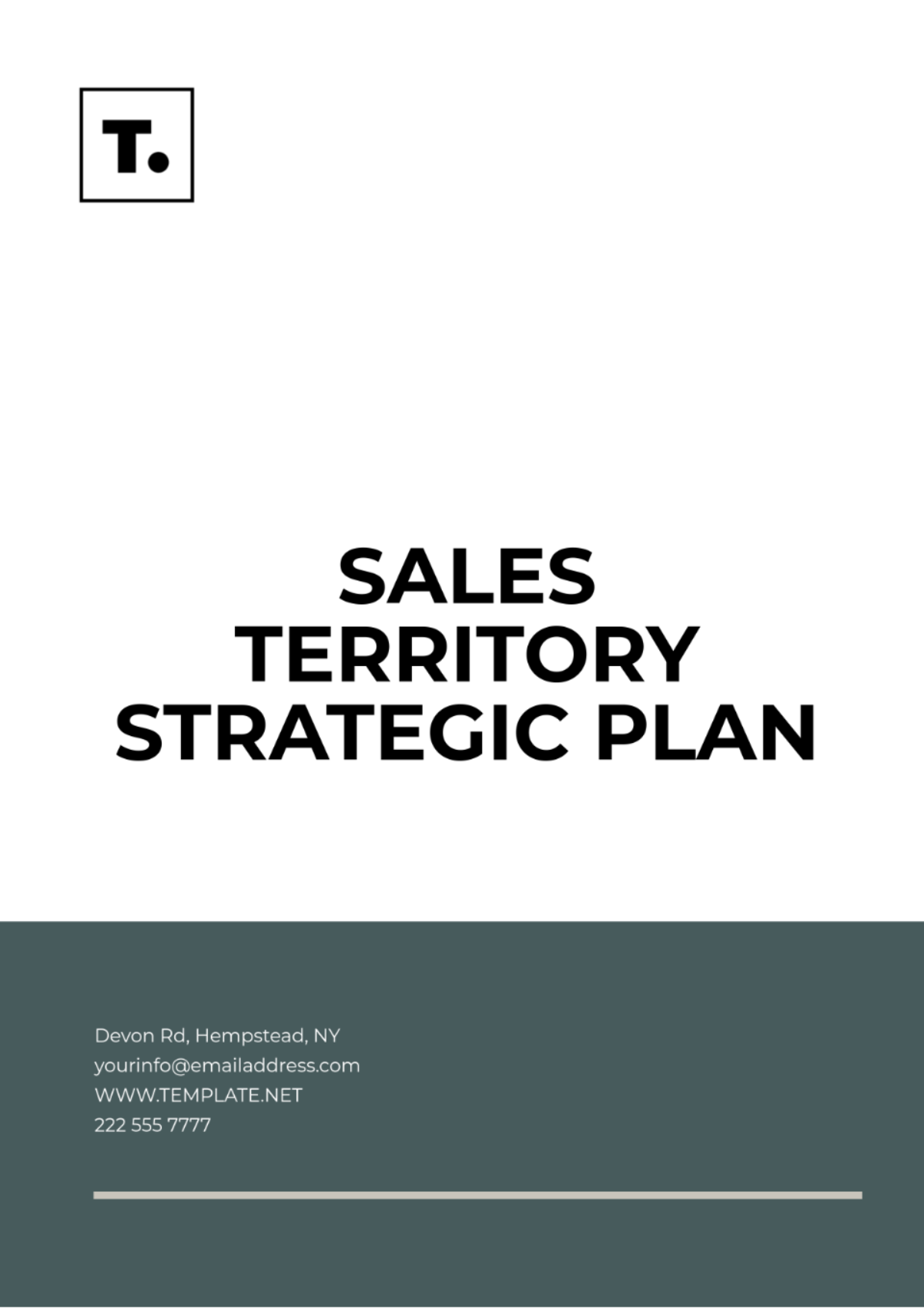Free Sales Territory Strategic Plan

Prepared by: [Your Name]
Timeframe: January 1, 2060 – December 31, 2060
I. Territory Overview
This section outlines the characteristics and potential of the sales territory. It provides a foundation for setting strategies and aligning sales efforts.
Geographic Area: The territory encompasses the western regions of the United States, including California, Nevada, Arizona, and Oregon.
Market Size & Potential: The region is home to approximately 50 million consumers and a growing number of technology startups, healthcare institutions, and green energy companies. This area is projected to see a 10% year-over-year increase in business development, presenting significant growth opportunities.
Key Industries: The primary industries include technology (AI and robotics), renewable energy (solar and wind), and healthcare. Emerging sectors such as autonomous transportation and space tourism are also gaining traction in this region.
II. Target Customers
The goal of this section is to define the specific customer segments that will be targeted to maximize sales opportunities within the territory.
Demographics: Focus on mid-to-large enterprises with 500+ employees, especially in the technology and healthcare sectors. A secondary focus will be placed on small businesses in the renewable energy industry.
Buying Behavior: Target customers value innovation, long-term partnerships, and sustainability in their purchases. They tend to favor vendors who provide comprehensive, customizable solutions. The decision-making process generally involves multiple stakeholders, including procurement, IT, and executive leadership.
III. Sales Goals & Objectives
This section establishes the specific targets and key performance indicators (KPIs) that will measure success in the sales territory.
Revenue Target: Achieve $500 million in total revenue by December 31, 2060, representing a 15% increase over 2059.
Market Share Growth: Increase market share by 5% in the technology and renewable energy sectors.
Customer Retention: Maintain a customer retention rate of 90% across all segments.
New Account Acquisition: Secure 100 new enterprise accounts and 200 small business accounts within the territory.
IV. Action Plan
This section provides a detailed roadmap of the strategies and initiatives that will be executed to achieve the sales goals and objectives.
Sales Strategy: Focus on a consultative selling approach, emphasizing customized solutions that meet the specific needs of each target industry.
Account Segmentation: Prioritize high-value accounts in the technology and healthcare sectors. Deploy a dedicated team of account executives for each segment to ensure personalized engagement.
Lead Generation: Collaborate with the marketing team to generate high-quality leads through targeted campaigns, virtual conferences, and AI-driven outreach programs.
Cross-Selling & Upselling: Maximize revenue from existing clients by introducing new product lines and offering bundled services. Provide training to sales representatives on identifying cross-sell and upsell opportunities.
Customer Success Initiatives: Implement a proactive customer success program aimed at enhancing customer satisfaction and retention. Offer quarterly business reviews and ensure timely issue resolution.
V. Resource Allocation
This section details how resources will be distributed to maximize efficiency and ensure alignment with the strategic goals.
Sales Team Structure:
10 Senior Account Executives
15 Junior Sales Representatives
5 Sales Engineers (to provide technical support during sales processes)
Marketing Support: $10 million allocated for co-marketing campaigns, digital advertising, and industry event sponsorships in key industries.
Technology & Tools: Utilize advanced CRM platforms and AI-driven analytics to track performance and provide data-driven insights for decision-making. The budget will allocate $2 million for these tools and ongoing software updates.
VI. Performance Metrics
This section defines the methods and metrics for tracking progress and ensuring accountability throughout the sales cycle.
Monthly Sales Reviews: Conduct monthly performance reviews, measuring sales against targets and analyzing the effectiveness of sales initiatives.
Customer Satisfaction Scores (CSAT): Achieve an average CSAT of 95% or higher, using feedback from customer surveys conducted after each sales interaction and product implementation.
Sales Conversion Rates: Track the percentage of qualified leads that convert into closed deals. Aim to achieve a conversion rate of 30% by the end of 2060.
Sales Pipeline Health: Maintain a healthy sales pipeline with at least 5x the target revenue in qualified opportunities at all times. Use AI forecasting tools to predict potential bottlenecks and adjust strategies accordingly.
VIII. Conclusion
This strategic plan for the 2060 fiscal year is designed to optimize sales efforts within the designated territory, drive market share growth, and improve customer satisfaction. By executing the outlined strategies and closely monitoring performance metrics, we aim to achieve substantial revenue growth and strengthen our competitive position within the industry.
- 100% Customizable, free editor
- Access 1 Million+ Templates, photo’s & graphics
- Download or share as a template
- Click and replace photos, graphics, text, backgrounds
- Resize, crop, AI write & more
- Access advanced editor
Manage your sales territories effectively using the Sales Territory Strategic Plan Template from Template.net. This editable and customizable template allows you to streamline your sales operations across regions. Tailor it to fit your team's needs using our Ai Editor Tool, making it easy to refine based on market changes and strategies.





























